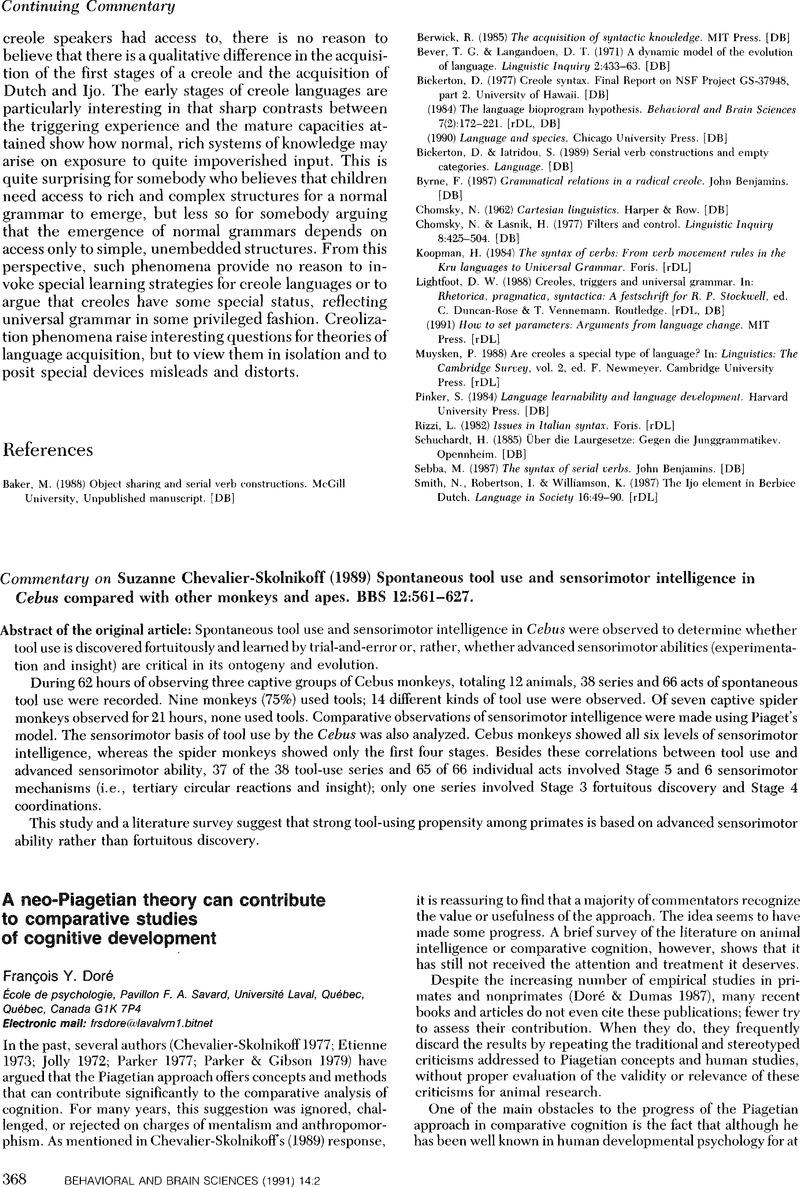Crossref Citations
This article has been cited by the following publications. This list is generated based on data provided by Crossref.
Topál, József
2009.
Az összehasonlító evolúciós perspektíva szerepe a piegetiánus tárgyállandóság értelmezésében.
Pszichológia,
Vol. 29,
Issue. 3,
p.
189.





